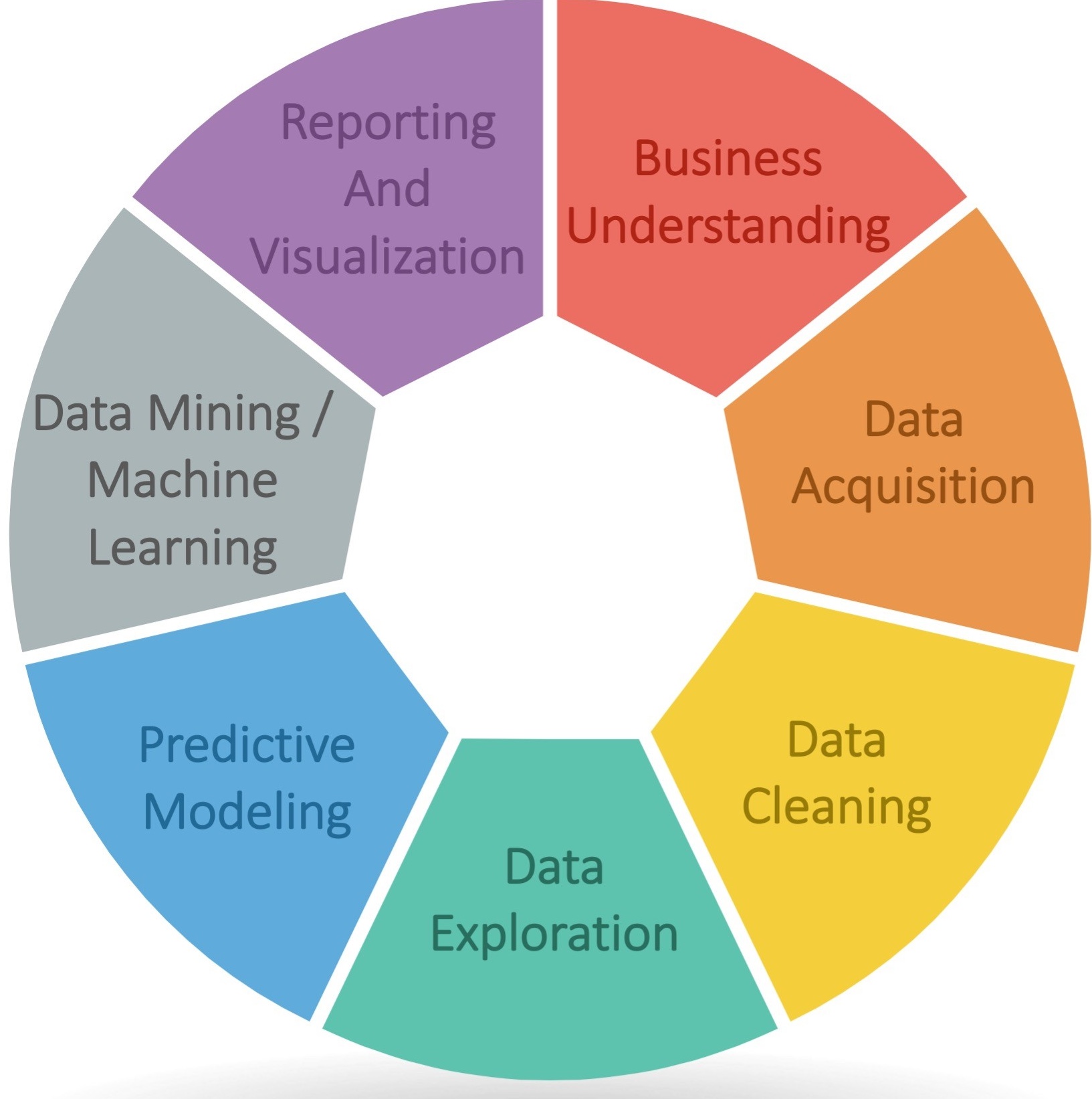Data Analytics Lifecycle
The data analytics lifecycle consist of the entire process from understanding the business problem and objectives to the communication and visualization of the data and analysis. Upon gaining a business understanding of the objective after collaborating with stakeholders, data analyst will then begin collecting and gathering data from various sources that will undergo cleaning and preprocessing steps to address errors, inconsistencies, and missing values ensuring the data is of great quality. Analyst will then need to perform exploratory data analysis where they dive deep to discover patterns, trends, and relationships giving them key insights that will drive their in-depth data analytics and modeling. To perform the data analytics and modeling, analyst will use statistical techniques, machine learning algorithms, and other analytical methods to allow them to mine for key insights or develop machine learning models. Finally, data analysts will then communicate their actionable insights and findings to stakeholders via reports, presentations, or dashboards. Following this meeting, analyst can validate and refine their results to iterate or make changes to their analysis.
Stages of the Data Analytics Lifecycle
- Business Understanding (Discovery)
- Data Acquisition (Collection)
- Data Cleaning (Preparation)
- Data Exploration (Exploratory Data Analysis)
- Predictive Modeling (Data Modeling)
- Data Mining (Machine Learning)
- Data Reporting & Visualization (Representation & Communication)

Deeper dive into the phases: Data Analytics Lifecycle Phases
Alternate Cycle
The previous lifecycle is not the only way to represent the lifecycle. There are many different ways to interpret the lifecycle but they all feature very similar steps and processes.
Google’s Data Analysis Phases:

This alternative view from the Google Data Analytics course features a similar structure with some minor differences. They can be mapped to our life cycle as follows:
- Ask: Business Understanding
- Prepare: Data Acquisition & Data Cleaning
- Analyze: Data Exploration, Predictive Modeling, & Data Mining
- Share: Reporting and Visualization
- Act: The resulting business decisions from our lifecycle
Source: Six phases of data analysis - Google Data Analytics - Lesson 13
IBM Cloud Data Science Lifecycle
 This is another alternative view of the lifecycle feature extra information as to which phases fall under the domain of different roles within an organization. It is important to note that IBM has decided to refer to the Data Acquisition phase as “Data Mining” and the Data Mining phase is simply now called “ML”.
This is another alternative view of the lifecycle feature extra information as to which phases fall under the domain of different roles within an organization. It is important to note that IBM has decided to refer to the Data Acquisition phase as “Data Mining” and the Data Mining phase is simply now called “ML”.
Source: What is Data Science?
Resources
Deeper dive into the phases: Data Analytics Lifecycle Phases